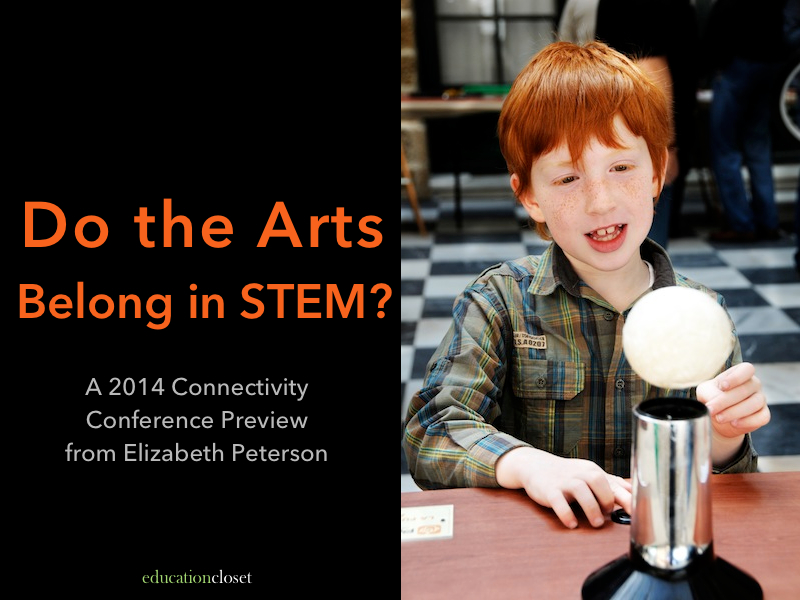Do the Arts Belong in STEM?
3 Min Read • Literacy
Editor’s Note: Today’s post is provided by Elizabeth Peterson, and is a sneak peek of her upcoming presentation at the 2014 Connectivity Conference: gathering STEAM.
STEM was designed with integration in mind. It is creating a lesson that incorporates the best of science, technology, engineering and math. It asks students to question the work they do while searching for an answer. You calculate while you experiment. You find the correct tools to use as you design your plan and execute it. If focuses on process as well as product. It is hands-on learning that does not compartmentalize, but integrates the many sides of the sciences.

Arts in STEM
What is STEAM? It is science education at its best. It is true arts integration. It puts another level into the scientific process, deepens understanding of concepts and is such a natural fit.
The arts belong in STEM education.
For centuries, the arts and sciences have been interwoven. One person many STEAM advocates refer to is Leonardo DaVinci. He is recognized not only as an engineer and anatomist, a botanist and inventor, but is considered one of the great artists in history.
In fact, it was his artistic abilities that made him the magnificent scientist he was: he had an observant eye, passionate curiosity and the skill to note and record his findings in his countless notebook pages. What he saw, he drew. He drew to understand the world around him and to explore the designs he engineered in his head.
The arts play a role in all that we do and STEM topics are certainly part of this.
Changing from STEM to STEAM
Why is it that now we see them as separate entities? Maybe it’s the fault of the traditional education system by which we seem to still be run. Maybe it’s the fault of standardized testing that takes the emphasis off hands-on learning and puts it on rote regurgitation. Maybe it’s because teachers feel they themselves are not artists and therefore not fit to integrate art into other content.
Regardless of the reasoning, change is needed if we want what’s best for our students. Time and again, it is shown that integrating arts into other content only solidifies, deepens and enriches students’ understanding of the material. More importantly, including the arts in STEM helps to produce the innovative thinkers we want to have leading and contributing to our future.
I’m looking forward to sharing more of my findings with the Connectivity participants that will show how the arts and sciences along with technology, math and engineering are truly intertwined. We will look at real life examples that have changed society as well as ideas for the classroom.
It is by understanding the power of the arts, that we can work to make change in our classrooms, schools and greater communities to recognize and implement STEAM education.

Elizabeth Peterson is a fourth grade teacher in Amesbury, Massachusetts and an Arts Integration specialist who hosts www.theinspiredclassroom.com. She teaches many workshops and courses in arts integration and proudly organizes the annual summer Teacher Art Retreat. Elizabeth believes that in order to be inspiring to our students we must get inspired ourselves through hands-on, teacher-centered professional development.



